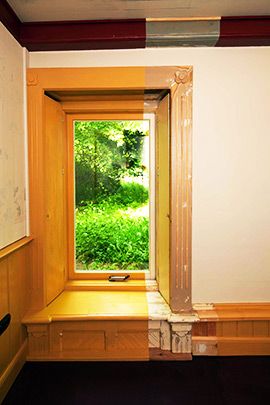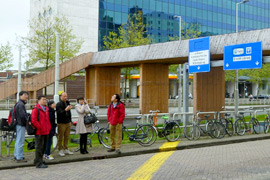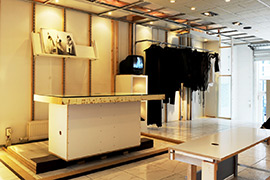
Study tour
Toward a paradigm shift in Sino-European cooperation on sustainable buildings
On May 13-17, 2013, Chinese officials from key national institutions joined a CSCP-organised tour of sustainable interior renovation projects in Germany and the Netherlands. This tour coincides with recent attention by both government and the building industry in China to explore the potential of the growing field of sustainable building interior renovation and decoration.
| Two Challenges There is already a significant degree of Sino-European cooperation on sustainable buildings in |
both, successful European government sponsored grant projects and established and expanding business relationships. However, there are technical and strategic challenges that confront this successful partnership.
Use and renovation remain unaddressed
The use phase long remained a gap in China’s sustainable building sector. Interiors of residential buildings in China have a comparatively short lifecycle relative to other countries. Chinese apartment flats usually undergo several rounds of complete renovation – bringing about a large ecological footprint and endangering the health and safety of workers and inhabitants. There are as yet few initiatives that address this issue despite the significant attention being directed toward energy efficiency for buildings.

All pictures show works of the dutch architect and sustainable designer Guido Marsille.
Study Tour Gains Scientific and Applied Insight
The CSCP study tour addressed this shortcoming and provided the Chinese visitors with ideas and inspiration to facilitate improvements in the building interior renovation industry in China. The experts from key national standards organisations and service providers obtained both scientific information and insights into tangible design examples and construction techniques. Sebastian Philipps (CSCP) was leading the study tour to visits at the Wuppertal Institute, InnoMateria (a Cologne materials trade fair),Material Connexion, and the RedDot Design Museum. They also toured several sustainable buildings in Rotterdam together with architect and sustainable designer Guido Marsille.
Sino-European cooperation on sustainable buildings at risk to lose its momentum
In addition to the technical challenges outlined above, the study tour also aimed to address a second larger challenge of bringing a strategic focus to the cooperation effort. Sino-European cooperation is often characterised by a focus on isolated solutions. Discourse on systemic interactions rarely occurs. Consequently, the impact of the overall cooperation effort is reduced.

The systemic dimension of sustainable buildings
The tour programme sought to encourage a new culture of exchange by emphasising the systemic dimension of building interiors. The tour explored different systemic levels including European framework policies on building environments, interior decoration, and aspects of product design and material selection. Only solutions that integrate all these levels can effectively overcome the dual challenges of addressing resource and energy consumption while also minimising health and safety issues.

Great opportunity for fundamental change
During their study tour the Chinese group also visited with Ecosign, an academy for sustainable design, to explore the potential not only to reduce the ecological footprint of current practice, but also how unsustainable consumption and production can be avoided completely. What are the lifestyles, product designs and business models that have potential to achieve this ambitious goal? The CSCP is continuing to work with the Chinese partners to explore the potential answers to these questions.
Further information
| Sebastian Philipps Project Manager +49 (202) 459 58 23 |

